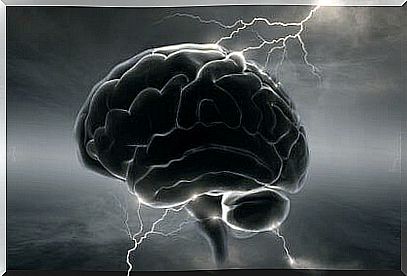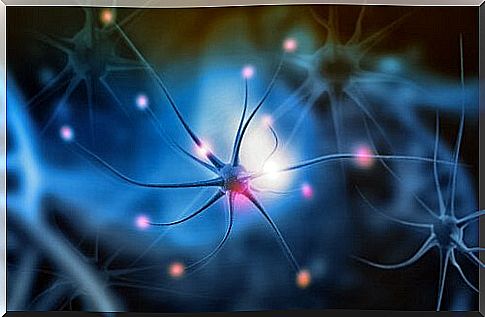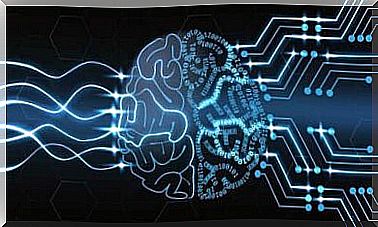Migraine And Dopamine: A Painful Relationship

Migraine and dopamine share a direct link that not everyone is aware of. When a person suffers from migraines, the brain goes through changes. One of these changes affects this type of neurotransmitter, dopamine. Researchers have observed that when a person has lower dopamine levels, they tend to suffer from hypersensitivity. In other words, they experience pain when they see light or hear sounds.
There has been some speculation for some time regarding this relationship. However, it was not until about a year ago that Alex DaSilva, a professor at the University of Michigan, published an article in the journal Neurology in which he describes this complex process. Thanks to new diagnostic techniques and advances in positron emission tomography (PET), we have accurate and detailed images of every change our brain undergoes during a migraine.
In fact, everyone who has this condition knows that there are both recurring and exhausting aspects to it. On some occasions, a smell, touch, sound or even the reflection of the sun is enough to make us immediately experience intense pain.
This condition is not really understood. If you have not experienced migraines before, it is difficult to understand why a semi-dark room causes relief or why it is impossible to be productive. Things like painkillers or a few rest days are not enough to relieve the pain. A migraine produces many changes in the brain, which makes it different from a normal headache. Let’s analyze them.

Migraine and dopamine: A painful relationship
Greek mythology tells us that Zeus suffered from a terrible headache for a long time. Volcano relieved his pain by opening his skull with an ax. Then Athena, the goddess of knowledge, came out of his skull.
Aretaeus of Cappadocia, and later Galen, used this metaphor to define what they called heterochrony , an intense and devastating headache. Later, in the seventeenth century, neurologist Thomas Willis called it a migraine.
That is a fact we cannot ignore. Migraines affect almost 15% of the population. In addition, according to the Institute of Health and Biomedical Innovation at Queensland University of Technology , it is genetic. Therefore, it is very likely that the children of people suffering from migraines will also get them in the future.
Thus, we need to investigate this condition further to prevent it and treat it more effectively. To do so, getting to know the relationship between migraine and dopamine is without a doubt a good first step. Let’s look at what this relationship is about.
Dopamine and its function in the brain
Dopamine is one of the most important neurotransmitters in our brain. It is important for many motor and cognitive processes.
Furthermore, according to a study in the journal Nature Neuroscience by Charité – Universitätsmedizin Berlin , the concentration of this neurotransmitter in the amygdala will determine whether you are more nervous or calmer.
To understand the relationship between migraine and dopamine, it is important to know what functions this chemical participates in:
- Memory, attention, motivation and problem solving.
- Motor skills.
- State of mind.
- Learning.
- The reward system.
- Pain.

People with migraines have fluctuations in dopamine levels
Professor DaSilva made the following findings after conducting a series of tests on a large number of people suffering from this condition:
- Studies have shown that during a migraine attack, there are lower levels of dopamine. This causes hypersensitivity (hypersensitivity). In other words, stimuli such as light, sounds, smells, or even a small scratch on the skin, can be painful.
- At the same time, dopamine levels increase when you apply something warm to a person with migraines. This increase in dopamine causes other symptoms such as dizziness and vomiting.
All of this makes experts wonder if migraines are related to a problem with dopamine fluctuations. There are moments when they decrease and others when they increase if certain stimuli are present, such as heat.

Foods with tyrosine and their relationship to migraines and dopamine
Tyrosine is a non-essential amino acid that acts as a precursor for the production of dopamine and adrenaline. Because of this, it is necessary to regulate the consumption of all foods that contain tyrosine.
Instead of eliminating foods that contain tyrosine from our diet, we should try to moderate their consumption. Given that this condition creates clear fluctuations in our dopamine levels, it is necessary to avoid generating too much or too little dopamine. Balance is the key. Therefore, it is useful to remember which foods have the most tyrosine:
- Beef, chicken, pork and lamb.
- Salmon and cod.
- Dairy products.
- Egg.
- Soy drinks.
Finally, there is a clear link between migraines and dopamine. It is worth mentioning that researchers are currently developing new drugs to regulate dopamine production, in order to sooner or later be able to create an effective treatment.









